In the age of high-tech innovation, it’s often the humblest materials that spark the most radical ideas. Paper—ancient, abundant, and endlessly adaptable—has emerged as a surprising protagonist in contemporary design. The following lamps each use paper as their core material, reinterpreting it in dramatically different ways.
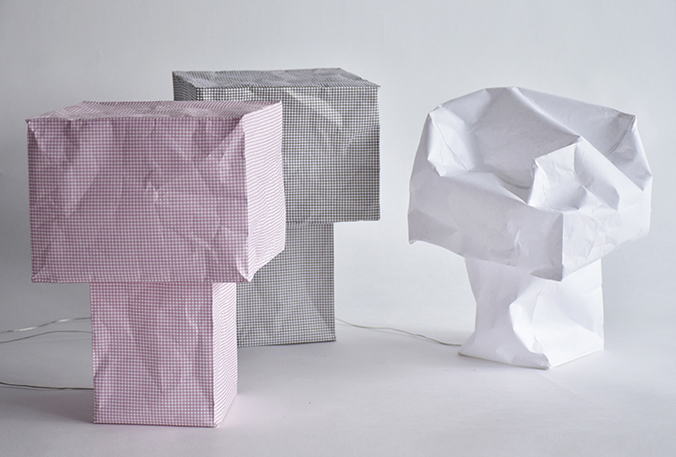
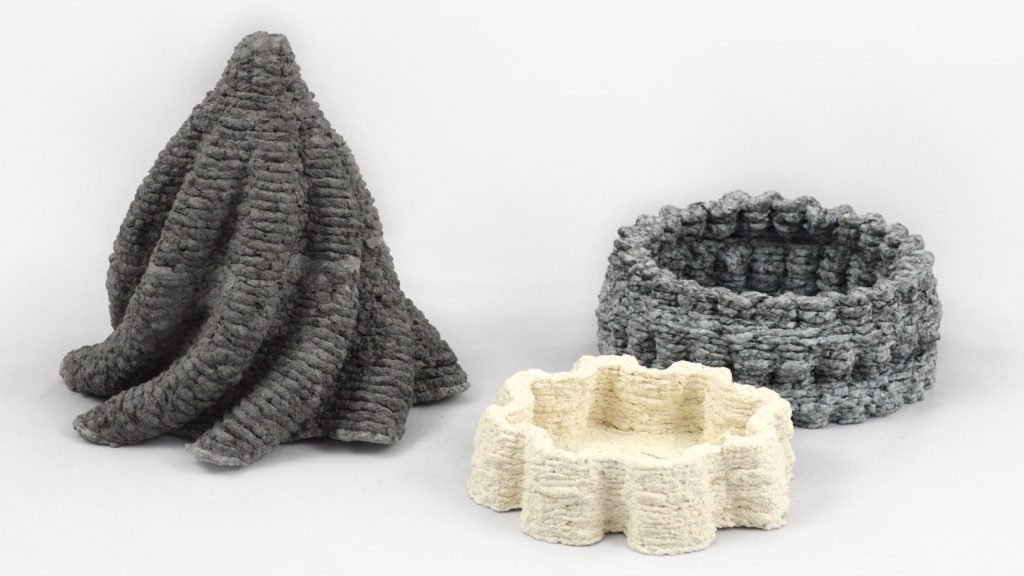
Paper Pulp Lamp by Beer Holthuis
Design Academy Eindhoven graduate Beer Holthuis developed the Paper Pulp Printer as a challenge to the environmental impact of plastic-based 3D printing. Realizing the irony of using unsustainable materials to prototype sustainable ideas, Holthuis asked whether one of the world’s most discarded resources—paper—could become a viable printing medium. His solution involved creating a custom extrusion machine that uses recycled paper pulp, turning waste into durable, biodegradable forms.

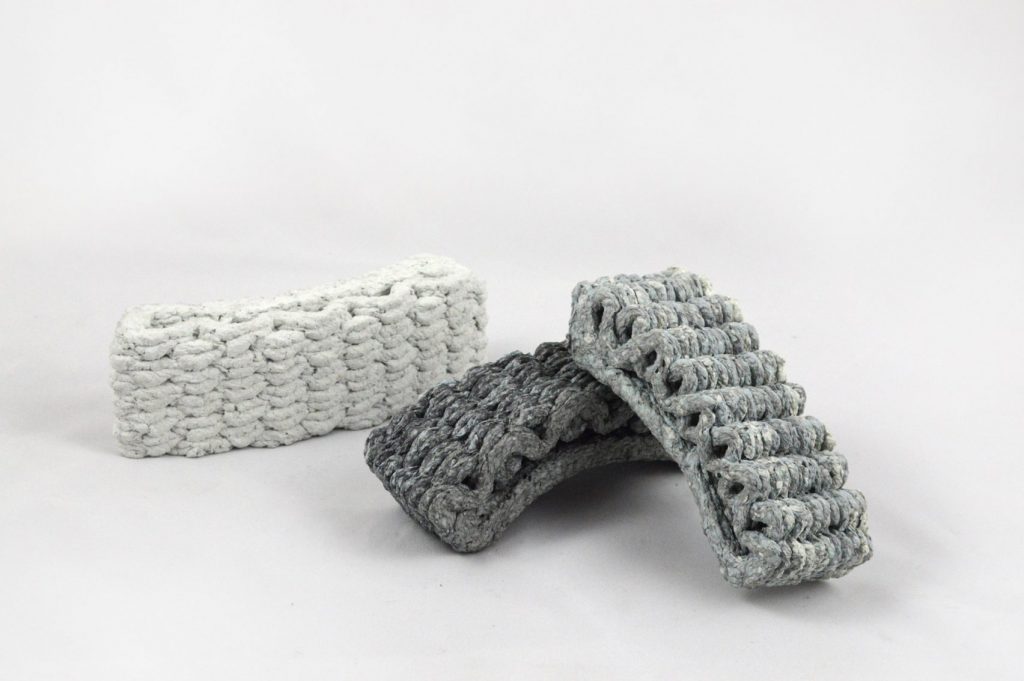
Paper Pulp Lamp by Beer Holthuis
Unlike typical plastic filaments, paper pulp is affordable, fast to print with, and can be easily broken down and reused. “3D-printing with paper could have a big impact on the industry,” Holthuis explained. “There is a lot of waste—most models are printed to communicate something and are often thrown away.” With water, these models can dissolve back into pulp, closing the loop with minimal impact.
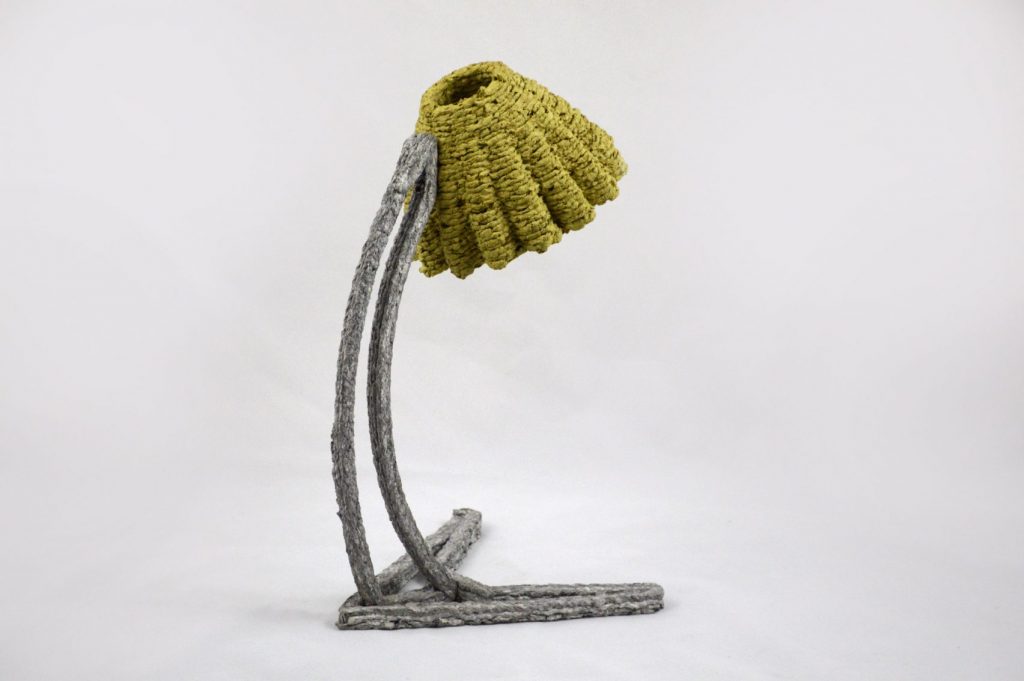
Paper Pulp Lamp by Beer Holthuis
Among the most striking outcomes of his project is a series of lamps 3D-printed entirely from this pulp. Their fibrous texture, soft matte finish, and sculptural shapes give them a natural warmth that contrasts with the often cold, plastic look of typical 3D-printed objects. These lamps are not just functional lighting pieces—they’re proof that sustainable materials can also be expressive and elegant. When illuminated, the texture of the pulp creates a subtle play of shadows and light, adding a tactile dimension that enhances the atmosphere of a room.

Paper Pulp Lamp by Beer Holthuis
Because the material is lightweight and the printing process relatively fast, Holthuis sees great potential in scaling this technique for larger items like custom furniture or architectural elements. Yet the lamp stands out as a symbol of what’s possible when sustainability and aesthetics are treated as equal design priorities. With finishes like natural varnish, the pieces can be made more durable while still maintaining their compostable core.
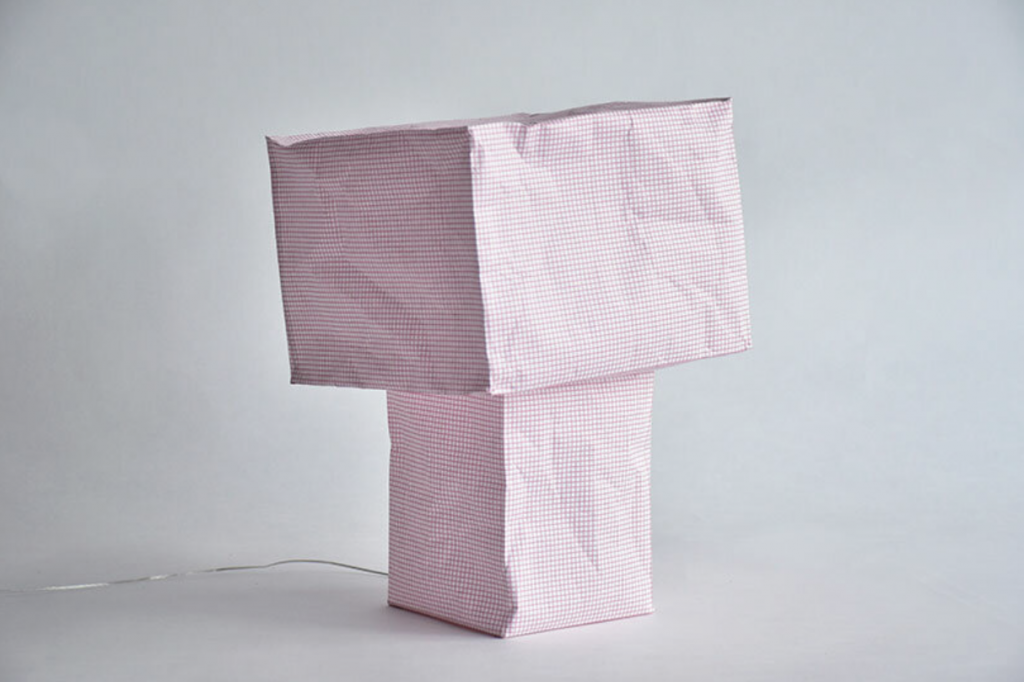
Tsubomi Paper Lamp by Kazuhiro Yamanaka (also header image)
Tokyo-based designer Kazuhiro Yamanaka offers a different but equally poetic response to design’s future with his Tsubomi lamp. Named after the Japanese word for “bud,” the lamp arrives vacuum-sealed in a flat, paper-thin rectangle. Once opened, air naturally fills the interior through small holes, causing the form to unfold and stand upright without any internal frame or structure. It is self-supporting, lightweight, and quietly enchanting.
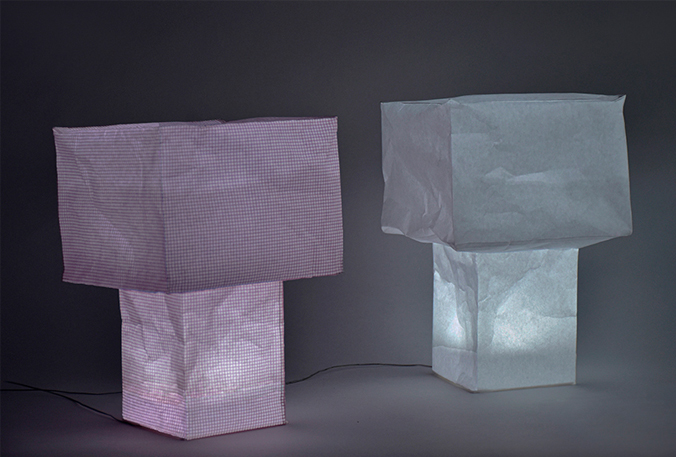
Tsubomi Paper Lamp by Kazuhiro Yamanaka
Made from a special translucent plastic inspired by traditional Shoji screens, the lamp’s material bears delicate wrinkles when folded. These creases become pronounced when the lamp is illuminated, offering a layered visual texture that enhances its sense of imperfection and uniqueness. “Tsubomi challenges the idea that only perfect forms are beautiful,” Yamanaka explains.

Tsubomi Paper Lamp by Kazuhiro Yamanaka
The paper-like material can be either plain white or feature a colored grid pattern that interacts with the light. These subtle grids not only emphasize the lamp’s irregularities but also tint the light it emits, creating a warm, ambient atmosphere. The design is simultaneously high-tech and deeply rooted in traditional Japanese aesthetics, referencing the quiet minimalism of classic architecture while offering a highly functional modern object.

Tsubomi Paper Lamp by Kazuhiro Yamanaka
The Tsubomi lamp fits easily into contemporary living, thanks to its collapsible, space-saving form. But it does more than solve practical problems—it introduces a sense of poetic ritual to everyday use. It opens like a flower, shines like a sculpture, and gently reminds us that even fleeting beauty can illuminate the spaces we inhabit.
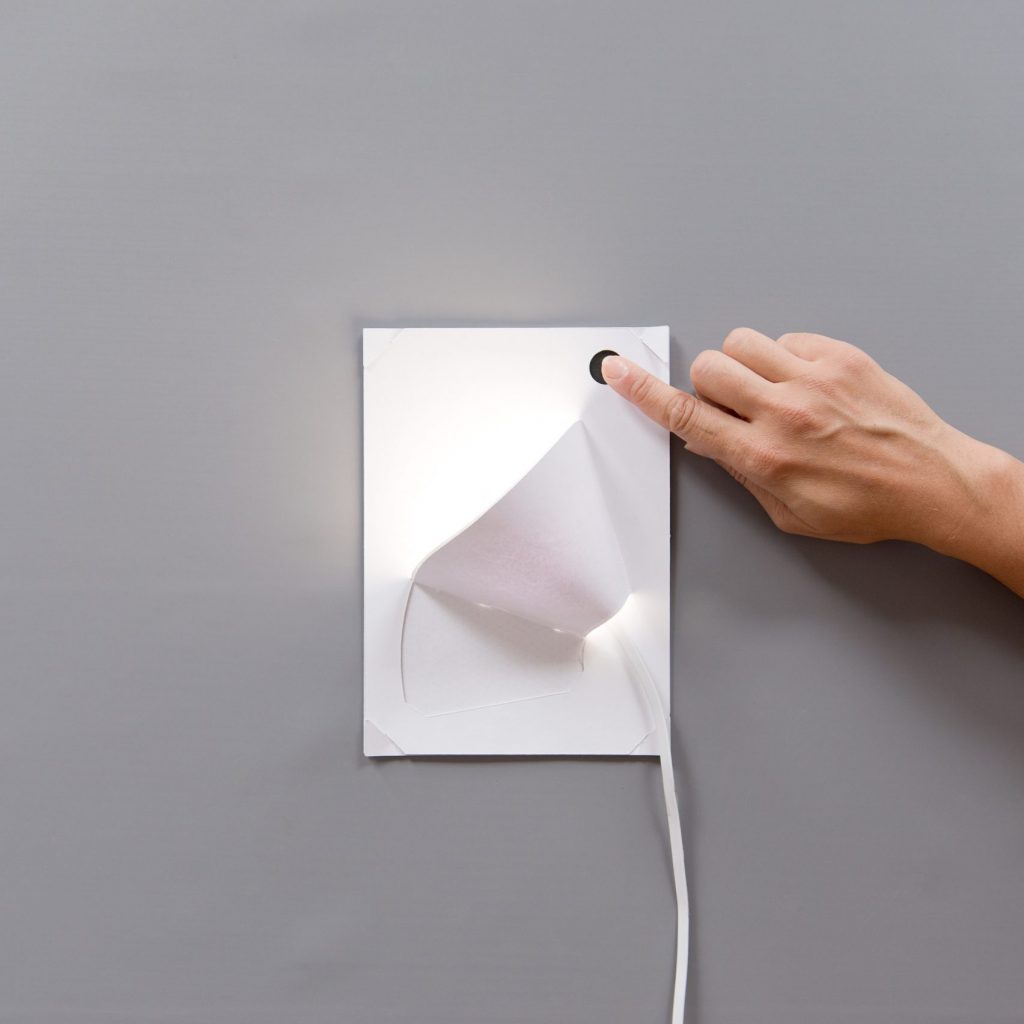
Electric Paint Lamp Kit by Bare Conductive
If Holthuis and Yamanaka reimagine what materials can do, Bare Conductive rethinks who gets to use them. The company’s Electric Paint Lamp Kit turns complex electronic functions into something playful and accessible. With a jar of conductive paint, a few LED components, and a simple template, users can paint their own circuits onto paper—and light them up with a touch.
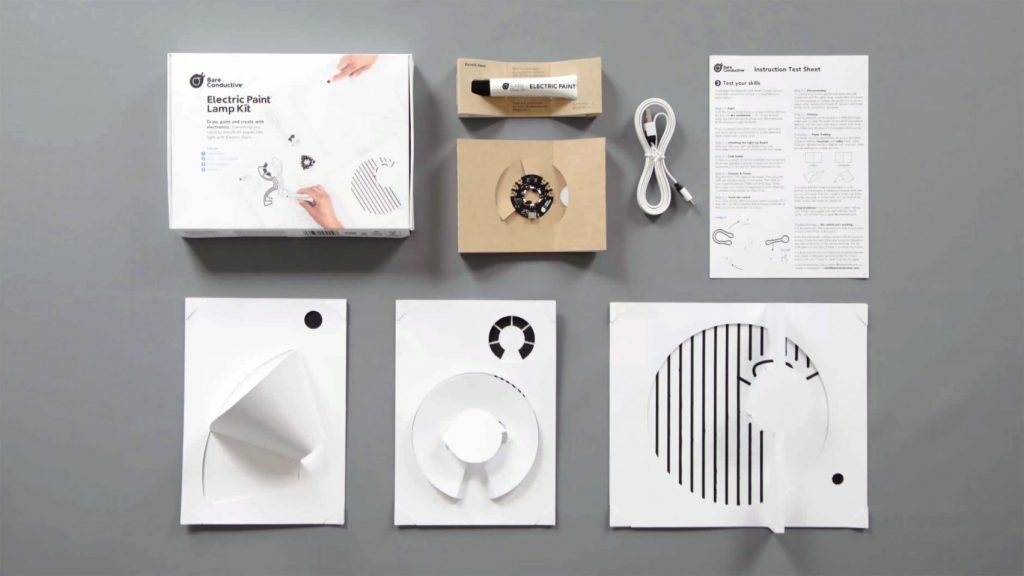
Electric Paint Lamp Kit by Bare Conductive
Originally developed to meet demand for its popular conductive paint, the kit requires no electronics experience. The paint, which is water-soluble and solvent-free, contains conductive particles that allow it to complete circuits on a variety of surfaces—from paper and textiles to plastic. This makes it possible to build lamps that respond to touch, functioning like dimmers, switches, or proximity sensors.
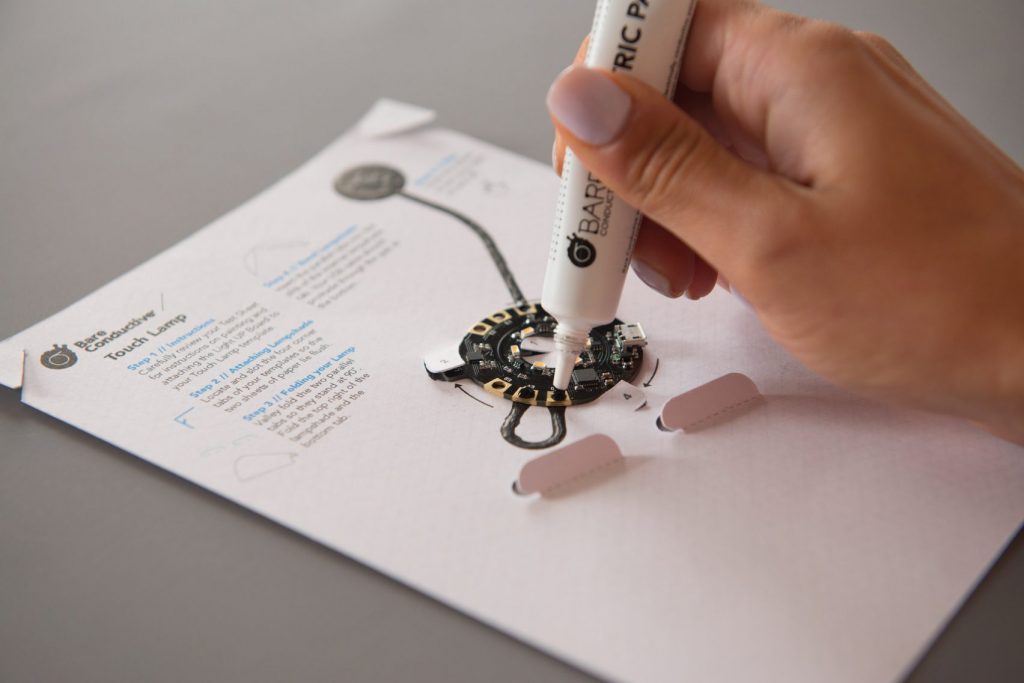
Electric Paint Lamp Kit by Bare Conductive
“Light is a great output to trigger with touch,” says the company. “We’ve had demos in the past using Electric Paint to trigger light, and they’ve always been hugely popular.” The kit is designed to let anyone—from curious students to seasoned tinkerers—experiment with interactive lighting in a hands-on, creative way. It includes paper templates, but users are encouraged to customize their designs or start from scratch.
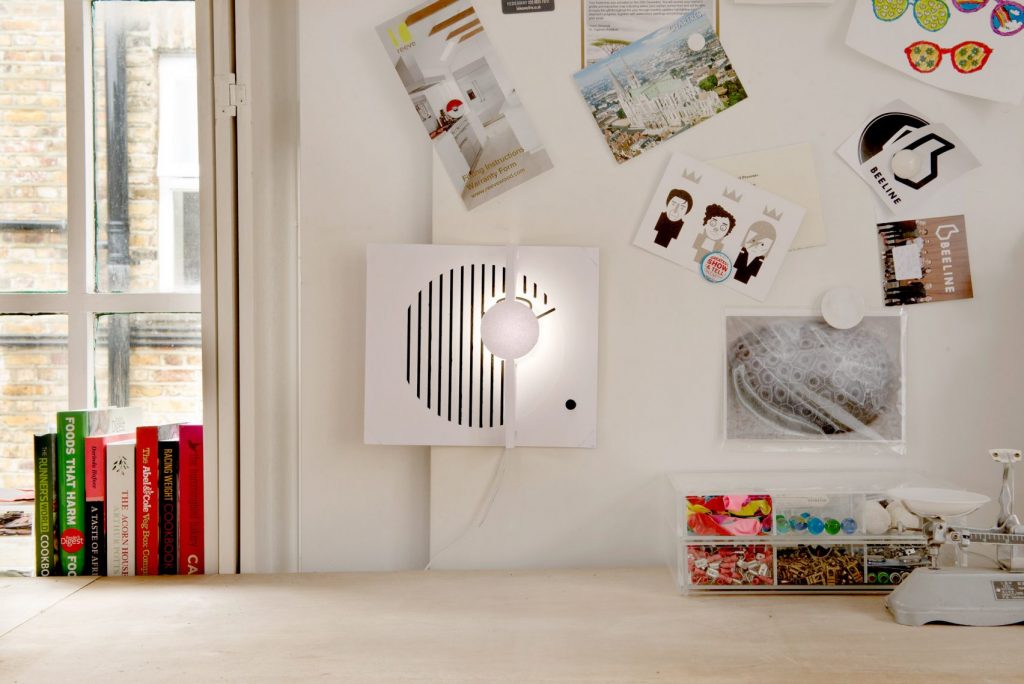
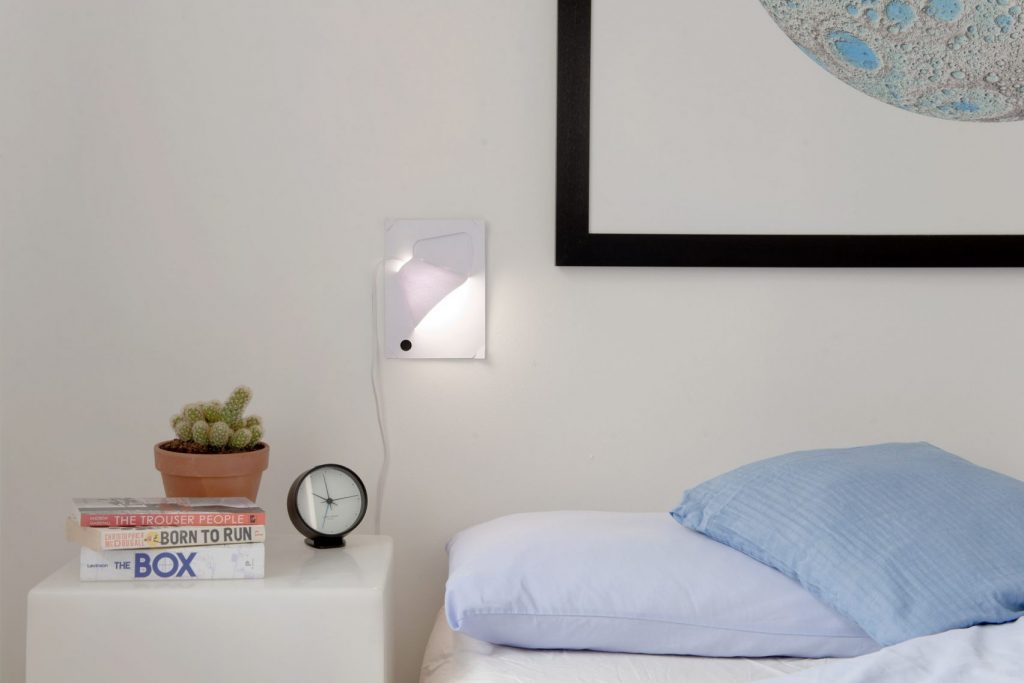
Electric Paint Lamp Kit by Bare Conductive
More than a DIY craft, the kit acts as an educational tool that introduces the principles of electronics through making. It invites users to explore how art and engineering intersect, creating functional objects with both personal expression and real-world utility. The result is more than just a lamp—it’s a gentle first step into the world of connected design.